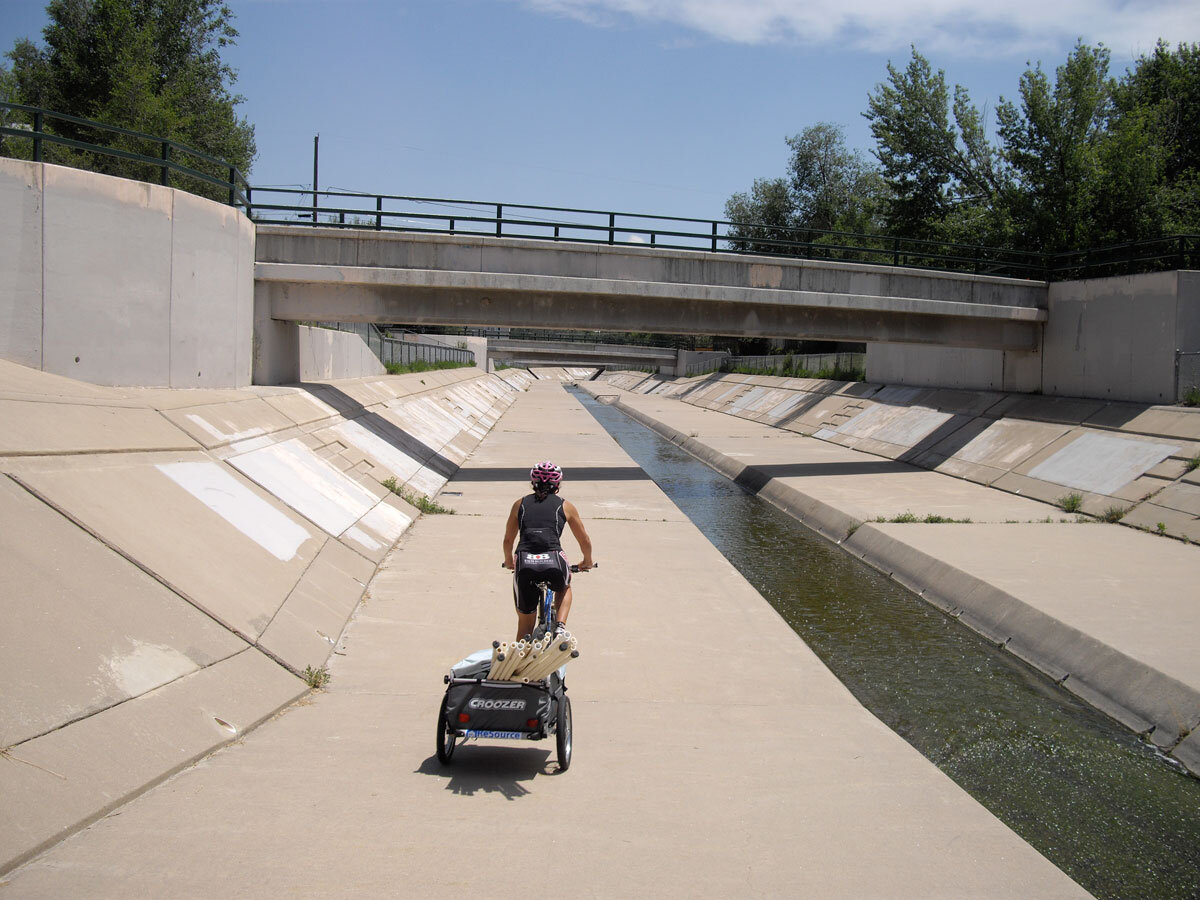Redline Contemporary Art Center approached me to do a piece for the Biennial of the Americas exhibitions in Denver, Colorado. The group exhibit explored the boundaries of art and life through innovative systems of creation and production. Throughout this exhibition, artists composted, grew, reused, and gathered supplies to reduce their carbon footprint. Inspired by simple ways of living and creating across the world from Ecuador to Mongolia, artists offered alternatives to over-consumption.
I transported my urban tepee over 45 miles by bicycle from my studio to Denver. The journey was documented and exhibited along with the tepee at Redline.
The urban tent is made of discarded plastic shopping bags and is inspired by my time living and working with the nomadic people of Mongolia. I originally traveled to Mongolia in 1992 and spent 2 years living in a yurt and an additional 10 years returning to work for brief periods of time. I observed the country’s rapid transformation from communism towards a free market economy. These economic and social changes have forced many Mongolians to leave their traditional ways behind. Their once nomadic culture has been steadily vanishing as many young Mongols are quick to abandon traditional ways for a more western influenced lifestyle in the newly formed urban centers. The animal bones left behind from animal husbandry that speckled the vast Mongolian grasslands in the past, are being replaced today by plastic bags and other post consumer waste products that litter this once pristine landscape.










